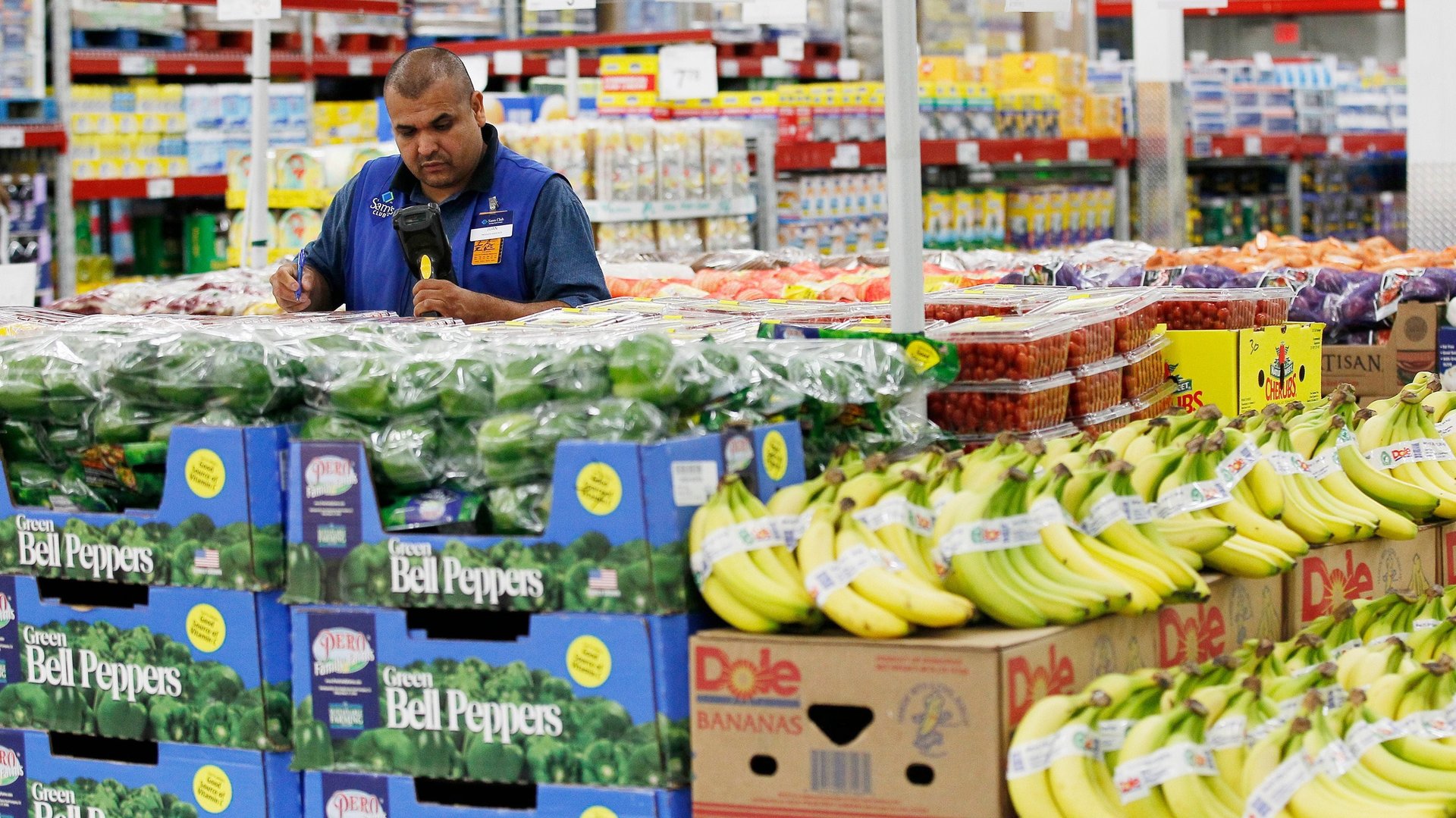If American shoppers are anxious about the economy, they don’t show it at Walmart
According to data from the US Commerce Department, American consumers had a subdued Christmas shopping season. But at Walmart, it seems, they were spending like crazy.


According to data from the US Commerce Department, American consumers had a subdued Christmas shopping season. But at Walmart, it seems, they were spending like crazy.
Walmart’s earnings report, released this morning (Feb. 19), shows that sales at the retailer were up for the fourth year in a row; this most recent quarter, for the period ending December, was its most robust in a decade. In response to the news, shares rose nearly 4% today. They’re currently up 7% from the start of the year.
Walmart ascribes its robust numbers to a healthy US economy, a strong labor market, and cheap gasoline, which the company sells through its membership-only subsidiary, Sam’s Club. Over the holiday season, the retailer pulled in former Toys “R” Us customers by boosting the range of toys available by 40%. In-store events, at which prospective customers kids were able to test out the wares in person, similarly helped to fuel sales.
The company’s further moves into food retail seem to have helped matters, too. Sales enjoyed a nudge after federal officials distributed food stamp aid early during the partial government shutdown. Online sales rocketed 43% in the quarter, as the company’s online grocery pickup and delivery services continued to expand. By the end of the year, the company expects to offer grocery deliveries at a further 800 stores, doubling its current offerings.
Walmart’s report stands in stark contrast to the fact that, just last week, the US Department of Commerce released numbers from December so bleak that some analysts questioned whether they could possibly be correct, while others pondered a slowdown on the horizon. The data suggested a December tumble of 1.2% in retail sales—the largest fall in nine years. Earlier estimates had suggested a slight lift of 0.2%.
How to reconcile the discrepancy? Perhaps Walmart’s low-cost offerings are hitting precisely the right note for customers keeping a close eye on their bank balance—or those with little room for flexibility.
For the last two years, both Walmart and Amazon have kept a close eye on what is sometimes dubbed America’s new “permanent underclass,” starting with their entry into a 2017 pilot program that allows SNAP recipients to buy groceries online. Walmart’s other e-commerce grocery offerings are a step in this direction, with an eye to rural customers living in relative food deserts. While these companies are thriving, retailers that have historically targeted wealthier Americans, such as Sears or Macy’s, are seeing sales slump.